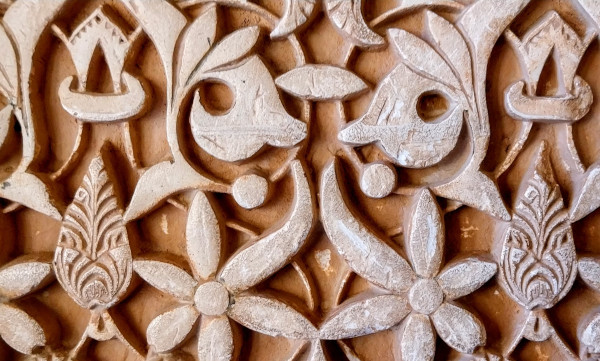
What was the Nasrid Dynasty?

The Nasrid Dynasty 
When you buy your tickets to visit the Alhambra you always have to choose the time to pass through the Nasrid Palaces. This is because the Nasrid palaces are the most sumptuous and amazing part of the Alhambra and there would be too many people if the access was not restricted and controlled. This article will explain who the Nasrids were.
The Nasrid dynasty  was the final Muslim dynasty to rule on the Iberian Peninsula, leaving an enduring legacy that still fascinates visitors from around the world
was the final Muslim dynasty to rule on the Iberian Peninsula, leaving an enduring legacy that still fascinates visitors from around the world  . Founded by Muhammad I ibn Nasr in 1230, the dynasty established the Emirate of Granada
. Founded by Muhammad I ibn Nasr in 1230, the dynasty established the Emirate of Granada  , which became a prosperous and culturally rich kingdom during a period of political turbulence.
, which became a prosperous and culturally rich kingdom during a period of political turbulence.
At a time when Christian kingdoms were expanding their territories during the Reconquista  , the Nasrids managed to maintain Granada's independence for over 250 years by skillfully balancing diplomacy, military strength, and strategic alliances. Their court was a center of culture, scholarship, and the arts
, the Nasrids managed to maintain Granada's independence for over 250 years by skillfully balancing diplomacy, military strength, and strategic alliances. Their court was a center of culture, scholarship, and the arts  , attracting poets, scientists, and artisans from across the Islamic world.
, attracting poets, scientists, and artisans from across the Islamic world.
The jewel of the Nasrid dynasty's achievements is undoubtedly the Alhambra  . Perched on a hilltop overlooking Granada, the Alhambra is a stunning complex of palaces, courtyards, gardens, and defensive walls. Its intricate stucco work, detailed tile mosaics, and breathtaking architecture
. Perched on a hilltop overlooking Granada, the Alhambra is a stunning complex of palaces, courtyards, gardens, and defensive walls. Its intricate stucco work, detailed tile mosaics, and breathtaking architecture  stand as a testament to the sophistication and artistic sensibility of the Nasrid rulers.
stand as a testament to the sophistication and artistic sensibility of the Nasrid rulers.
Life under Nasrid rule was marked by a blending of Islamic, Christian, and Jewish cultures  . Despite the pressures of external threats and internal strife, Granada thrived as a vibrant city filled with bustling markets, impressive schools, and magnificent gardens
. Despite the pressures of external threats and internal strife, Granada thrived as a vibrant city filled with bustling markets, impressive schools, and magnificent gardens  . The dynasty also maintained complex relations with the Kingdom of Castile, often paying tribute to secure their autonomy while navigating the shifting alliances of medieval Spain.
. The dynasty also maintained complex relations with the Kingdom of Castile, often paying tribute to secure their autonomy while navigating the shifting alliances of medieval Spain.
The fall of Granada in 1492  to the Catholic Monarchs, Ferdinand II of Aragon and Isabella I of Castile, marked the end of Muslim rule in Spain
to the Catholic Monarchs, Ferdinand II of Aragon and Isabella I of Castile, marked the end of Muslim rule in Spain  . Muhammad XII, known as Boabdil, was the last Nasrid ruler. His surrender of the Alhambra and subsequent exile symbolize the closing of a remarkable chapter in Spanish history.
. Muhammad XII, known as Boabdil, was the last Nasrid ruler. His surrender of the Alhambra and subsequent exile symbolize the closing of a remarkable chapter in Spanish history.
Today, the legacy of the Nasrid dynasty continues to captivate historians, travelers, and artists alike  . Their influence is still visible in the architecture, gardens, and art of southern Spain, and the Alhambra remains one of the most visited monuments in Europe, a living tribute to the brilliance of Nasrid culture.
. Their influence is still visible in the architecture, gardens, and art of southern Spain, and the Alhambra remains one of the most visited monuments in Europe, a living tribute to the brilliance of Nasrid culture.
1,441 views of this article.
Last Modified on April 26th, 2025
Created on April 26th, 2025
2,561,741 Total Views
This article is part of the following category. Click on the link to see a list of similar articles:
Go to homepage
Below is a list of the most highly rated places to visit in Spain
Click on the links to see the most popular activities that you can do in these places:
Note that the booking system uses a Spanish system and there is no involvement of any American company and no US tariffs.
